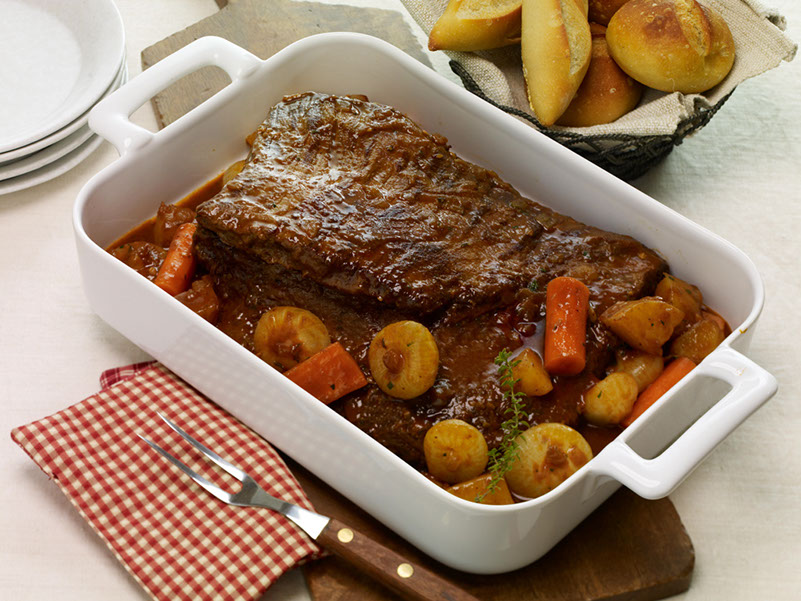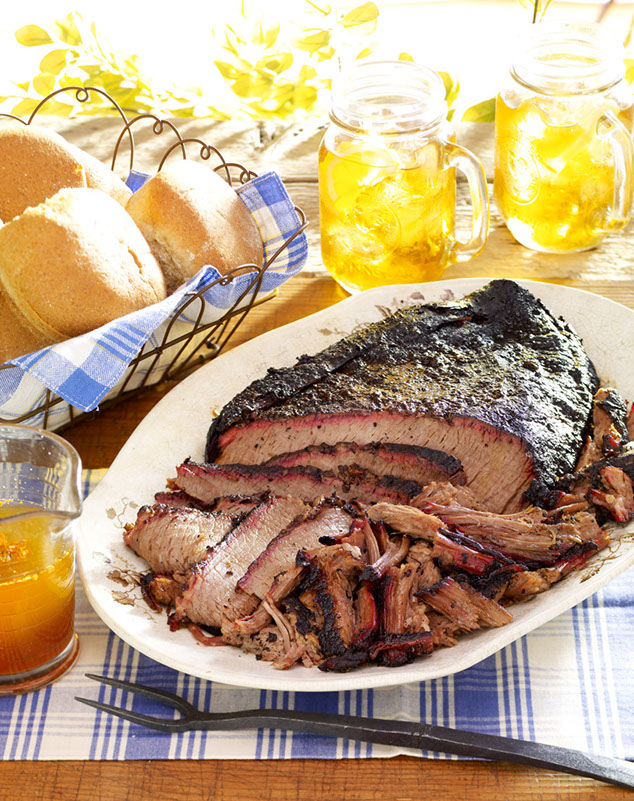The Lobel family of Lobel’s Prime Meats in Manhattan and Lobel’s of New York online butcher shop are fourth- and fifth-generation butchers. With our Cut of the Month series, we will bring you their wealth of knowledge and expertise on specific cuts of meat, including their unique characteristics, preparation methods, and how to select the best cut.
Brisket is one of our more popular cuts. Customers are always asking for it, and we’ve learned over the years that people are passionate about their brisket! That said, brisket is not the same thing to all people. To some, it’s the quintessential cut for good ol’ low-and-slow barbeque. To others, it’s a slow-cooked comfort food. And to others, it’s the centerpiece to a traditional Passover feast.
For these reasons, we’ve selected brisket for this month’s Cut of the Month.

Parts & Pieces
To understand the different ways of cooking and serving a brisket, it’s important to know the cut of meat we’re discussing.
Cuts of Brisket
The brisket is in front of the foreshank and under the shoulder (chuck). There are two cuts of brisket. The first cut is a bit dry, but lean. The second cut is much fatter and therefore juicier.
Parts of a Brisket
There are two parts to a brisket: the flat and the point. The flat is the large meaty part of the brisket, it is the leaner of the two sections and, once cooked, is best served sliced. The point—also called the deckle—is much more marbled. Once cooked, the deckle has a very different texture from the flat and is good for pulling or shredding.
The two sections of the brisket are separated by a layer of fat. The brisket is cut from the chest area. These muscles tend to be leaner and, therefore, can be tougher. However, this layer of fat found in the brisket is crucial. Cuts such as this lend themselves well to low-heat, high-moisture cooking methods. And the extra layer of fat in the brisket means that it has an internal basting mechanism—this layer of fat renders and bastes the meat from the inside out as it cooks.
A top layer of fat, called the fat cap, covers one side of the brisket entirely. When all four layers of fat and meat are left intact, a whole, untrimmed brisket is referred to as a packer’s cut, preferred by pit masters everywhere.

Let’s Get Cooking
Traditionally, brisket is cooked long and slow to ensure the tenderness of the finished dish. Lower-grade briskets have rather lean meat and a cap of fat that can vary in thickness. Lobel’s briskets have abundant marbling that bastes the meat from the inside as it cooks and a substantial fat cap that bastes the meat from the top down throughout the entire cooking process.
Braising
Braising is a moist-heat, slow-cooking technique that coaxes heavy muscle cuts of meat into fall-off-the-bone tenderness and produces deep, layered flavors. In the process, braises give off a soothing aroma that changes character as your dish quietly simmers away.
A braised brisket is the epitome of sitting down with your family or friends amidst the heady aroma to a meal that is the very essence of comfort food, community, and connections. A big platter of tender meat surrounded by aromatic vegetables is no single-serve enterprise, braised dishes are meant to be consumed around a communal table with banter and lively conversation.
Brisket lends itself well to braising because it is a large, lean cut with that magical inner layer of fat for self-basting.
Smoking
While braising is an ideal comfort-food cooking method for fall and winter, come spring and summer brisket is still a favorite on many menus: It is the beef cut of choice for barbeque aficionados.
In Texas where the word barbecue is synonymous with beef, brisket is a smoke-pit staple. So with a tip of our hat to a tasty Texas tradition, we suggest putting a USDA Prime brisket in your smoker over mesquite for 14 hours or so—you’ll think you found heaven on earth.
If you’re new to smoking brisket, everything you ever needed to know to get started with smoking can be found on our website! Our Smoking Meats 101 is a handy compendium of all things “low and slow.” You’ll find helpful descriptions of different types of smokers and even a quick-start guide on how to use your kettle grill as a smoker.
Curing
Another way that brisket can be prepared is by curing it and creating corned beef. Although corned beef takes five days to cure, it is otherwise very simple to make and more than worth the time. The result is a revelation to those familiar only with the stuff found in delis and diners, and if you’ve got leftovers, you can make the best Reuben Sandwiches and Corned Beef Hash you’ve ever had.
You can corn your own brisket using our recipe for Corned Beef, or buy a pre-cured USDA Prime Corned Beef Brisket from our online Butcher Shop.
Brisket Recipes
Braising Recipes
How To: Braise (master technique video)
Smoking Recipes
Smoked Brisket with Dry Rub and Mopping Sauce
Smoked Brisket with Coffee-Beer Mop Sauce.
Curing Recipes
What’s your favorite way to prepare brisket? Do you enjoy brisket for Easter or Passover dinner–or for another holiday or special occasion?



Leave Your Response